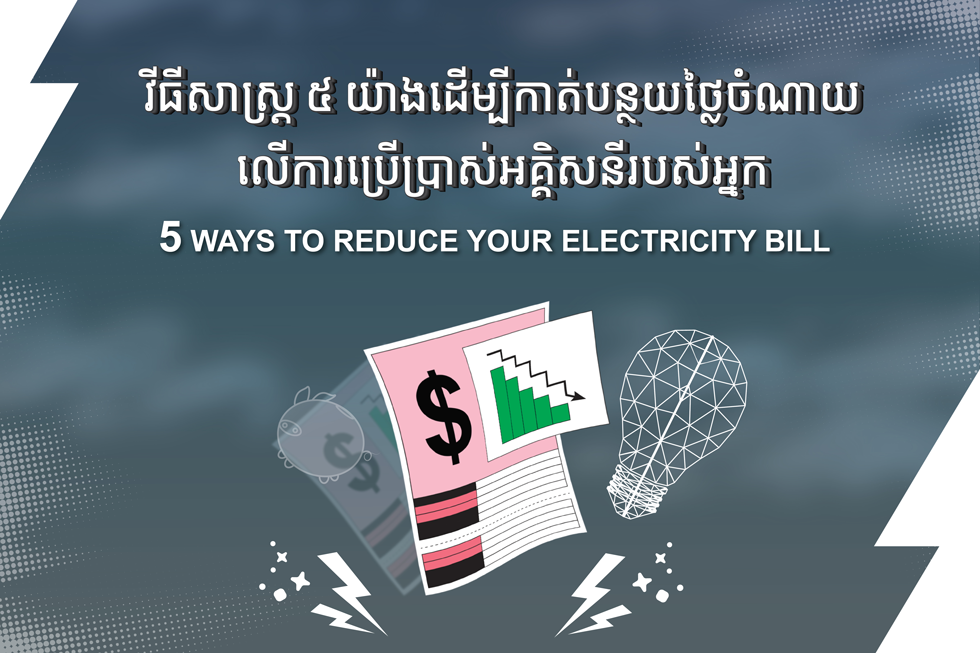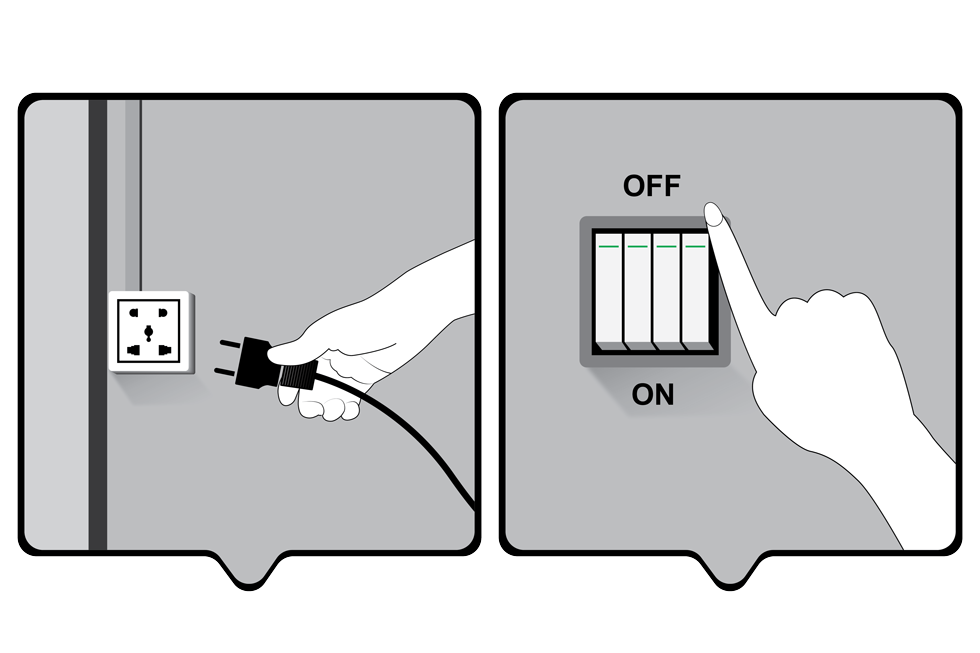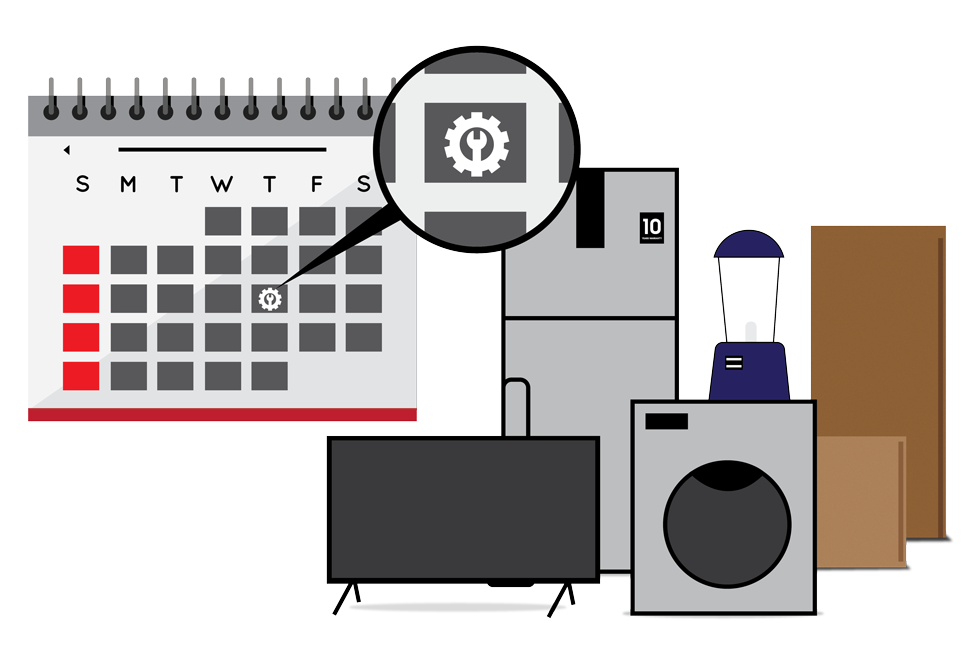23-Sep-2021 |
5 Ways To Reduce Your Electricity Bill
Authored By The VP.Start Team
In this blog post, we decided to take a less technical approach by simplifying our recommendations to reach a wider audience regardless of their technical or non-technical backgrounds and provide understandable suggestions to enable all in bettering their understanding of electricity, their energy consumption habits & some methods outlined below can help reduce our carbon footprint whilst saving money in the process. We hope you enjoy reading this post!
1. UNPLUGGING AS MANY ELECTRICAL DEVICES AS POSSIBLE. EVEN WHEN THEY ARE NOT IN USE.
Many of us might not be aware of this, but electrical devices, even when not in use, as long as they are plugged in, are drawing small amounts of power continuously. According to estimates, energy used from appliances that are plugged in, & not fully turned off, may represent up to 10%-15% of your monthly electricity bill! Simply, because electrical currents are still flowing through the devices at very low levels. Low enough to the extent that the equipment is not “switched on and operational” but enough to accumulate considerable energy costs over a long period of time which can reflect itself in your annual electric bill.
In sum, energy is still being consumed without your knowledge simply because your devices are plugged in! An easier way to notice this is to observe a standby indicator light, usually yellow or red depending on the device you are using. For TVs, gaming devices, washing machines, microwaves or even smart fans, etc, you’ll notice a red or yellow light on the device. In other words, it’s still consuming energy! Even if it might seem negligible at first.
Why this can add up is simply because, in the modern home, you can find at least 10 different types of equipment that are plugged in. Unplugging them can help save you at least 100-200 USD depending on the type of equipment, their standard power consumption, your frequency of usage, duration of usage and the overall number of electrical - equipment you own. Although it might not be feasible or possible to unplug all the equipment you own, it is definitely worth trying to compare your monthly energy bill.
Lastly, another added advantage of unplugging your devices is protection from uncontrolled voltage surges. Energy efficiency, power monitoring & control systems, and power quality thresholds have definitely improved and stabilized across Cambodia over the past decade. Although voltage surges used to be a more prevalent problem of the past in Cambodia, unfortunately, this continues to be a normal occurrence in developing countries without robust power-system infrastructure. Unplugging electrical devices is a simple straightforward way to reduce your monthly bill and safeguard against the loss of electrical equipment.
2. OPTING FOR ENERGY EFFICIENT ELECTRICAL EQUIPMENT & REPLACING OLD EQUIPMENT.
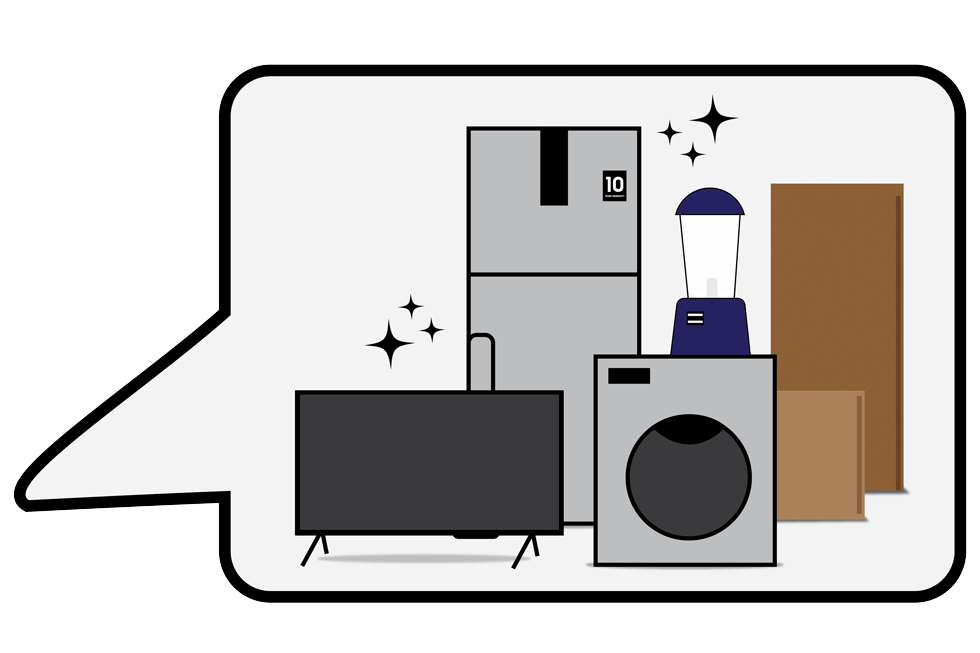
Electrical equipment & appliances are not built to last forever. Producers will normally state the service life of equipment & energy efficiency ratings certified by local regulators on the appliance or within the packaging, brochure or technical documentation. Different countries or regions also have different standards for rating energy efficiency as labels.
For example, in the EU region, a grading scale from A to G is used to rate energy efficiency of appliances. “A” being the most efficient while “G” being the least. In South Korea, a 5-point scale is used which is used to rate equipment from 1 to 5. With 1 being the most energy efficient while 5 being the least. These labels are also accompanied by detailed information such as carbon emissions and estimated power consumption in Watts (W) based on usage assumptions.
In simpler terms, the higher the energy efficiency ratings of an appliance, the lower the amount of energy consumed to achieve the same level of performance amongst similar models with the same size or capacity. Therefore, it costs you less to run over a year.
Looking out for these when replacing or purchasing new equipment can make a huge difference in your energy efficiency & therefore your monthly electricity bill.
Lastly, it’s important to remember that as electrical equipment suffer wear and tear over the use of their lifetime, older equipment not only depreciates in their value but more so in their ability to maintain set standards of energy efficiency that were initially certified & labeled onto the product when first purchased.
3. INVESTING IN A HOME AUTOMATION SYSTEM.
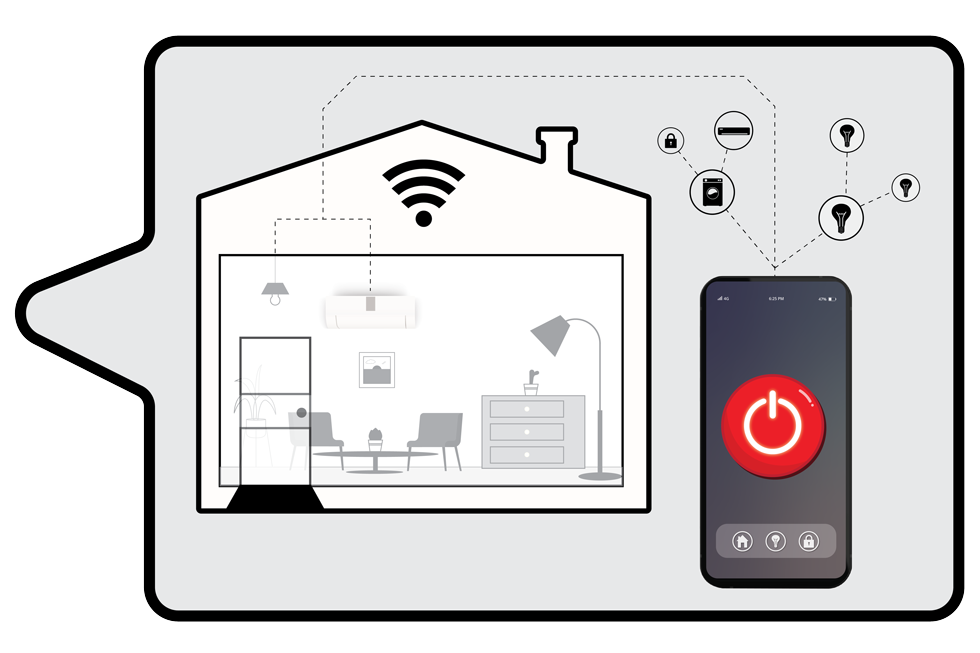
Home automation systems or building management systems (BMS) are fast becoming the new norm for industrial, commercial, or residential property owners for a variety of purposes. Depending on your home and the level of complexity, a home automation system can monitor and/or control aspects of your home such as its lighting, indoor climate, individual appliances such as your aircon or washing machine, and entertainment systems. In more sophisticated systems, control and monitoring also extends to your security systems such as physical access control, alarm systems, and camera security. In some of the latest and highly sophisticated home camera security systems, smart software is used for object & human detection through machine learning systems.
As such, “smart-homes” or home-automation systems are making it ever so easier for homeowners to monitor, control, and reduce their energy consumption through the data collected by the system. By first, taking steps to gain vital power data (kW/h) & then understanding your home’s energy consumption trends, homeowners and inhabitants will be in a better position to make informed decisions to effectively start reducing unnecessary energy consumption & increase energy efficiency. There’s a number of ways you can reduce your carbon foot-print & your energy bill through a home-automation system:
A- LIGHTING SYSTEMS.
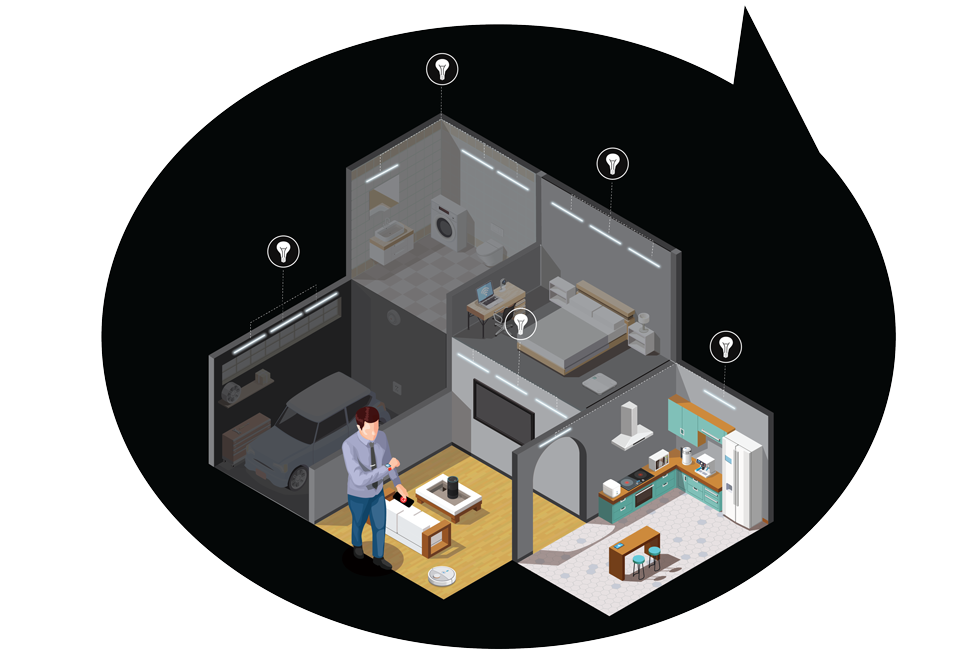
Lighting systems, lamps, or bulbs with motion or noise sensing capabilities are becoming ever more common. Even without integration with smart-home software or machine learning engines, certain lighting assets can operate independently when the light/motion sensor for a designated space or room is triggered. Additionally, lighting systems can also be programmed to dim or brighten during sunset or sunrise.
These methods can ensure lighting is only used when necessary & optimize energy usage. According to a joint study conducted by the UNEP (United Nations Energy Programme) in which some findings of its U4E (United for Efficiency) mandate were presented. The study found that high-efficiency lighting technologies offer up to an 85% improvement in energy efficiency compared to conventional lighting technologies whilst providing equal or better quality lighting. This is more reason to consider a commonly ignored aspect of our homes, such as lighting, more carefully for achieving maximum energy efficiency gains.
B- TEMPERATURE & INDOOR CLIMATE CONTROL.
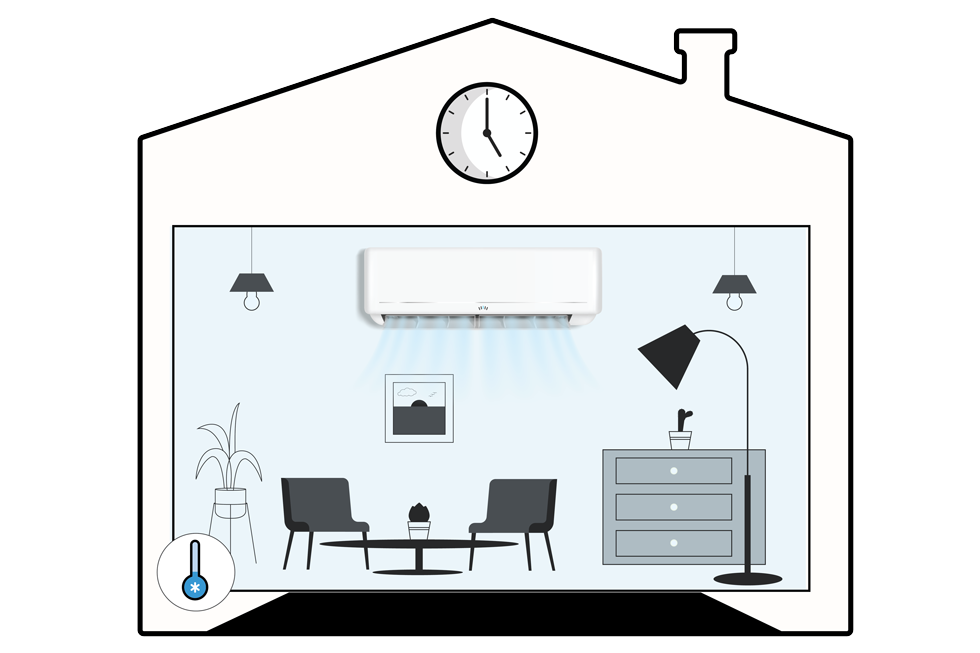
Scheduling temperature changes to meet your specific needs is another feature home automation systems provide. Automatic management of your homes’ air conditioning & heating can easily provide significant savings consistently any time you are away from home. This will ensure more accurate control over the usage of HVAC (Heating, ventilation and air-conditioning systems). In more sophisticated systems, climate control can be coupled with control over shading, curtains & ceiling fans to increase control over indoor climate for more accuracy, therefore, further increasing savings. A recently released study conducted by a U.K based home automation manufacturer estimated a 10-12% increase in heating efficiency, 15% increase in cooling efficiency and an average of $131-$145 USD in cost savings per year through the use of its systems’.
C- “ALL OFF” COMMAND.
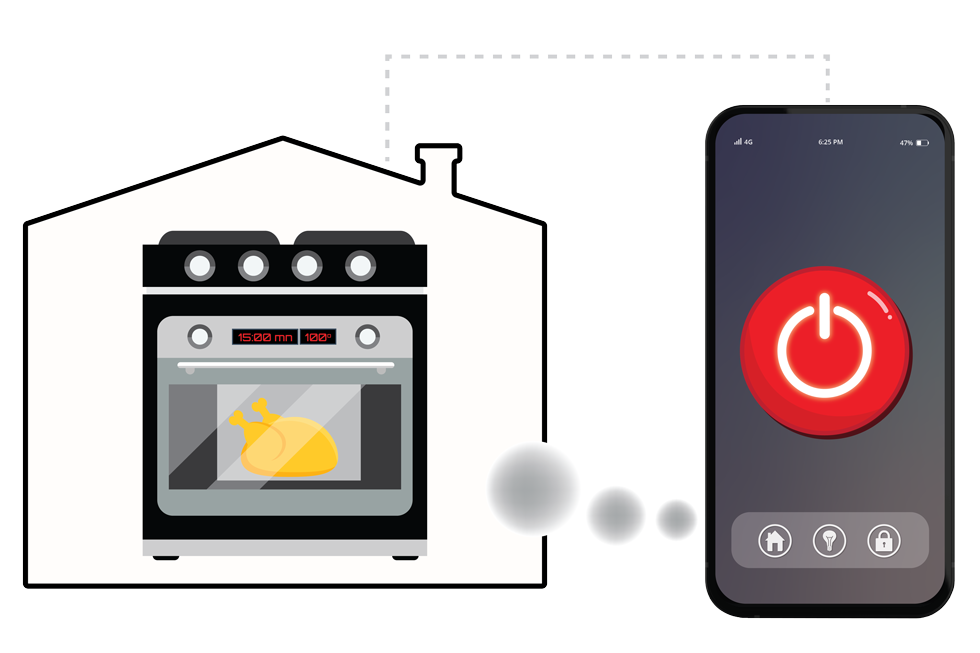
Imagine, you leave home in a hurry and suddenly realize you left your iron on. Soon you start thinking about the other devices you might have left on as well such as your audio speakers, aircon, television, and fans. This is a common occurrence! In one survey, up to 90% of American households claim that they’ve left the light on at some point without remembering to turn it off. Whether you’re heading out for a quick lunch, work, or vacation, a home automation system can be programmed to execute a simple “all off” command with the touch of a button over a smart-phone app or PC application to turn off all systems & electronic devices that are still running. Similarly, the home automation system software can also set up alarm notifications in the event that the sensors are triggered due to inactivity in a household space or that you have simply left your home whilst electrical devices are still running. This simple feature can provide effective means of saving energy & reducing your household's overall carbon footprint.
D- DECREASE IN PHANTOM ENERGY DRAIN.
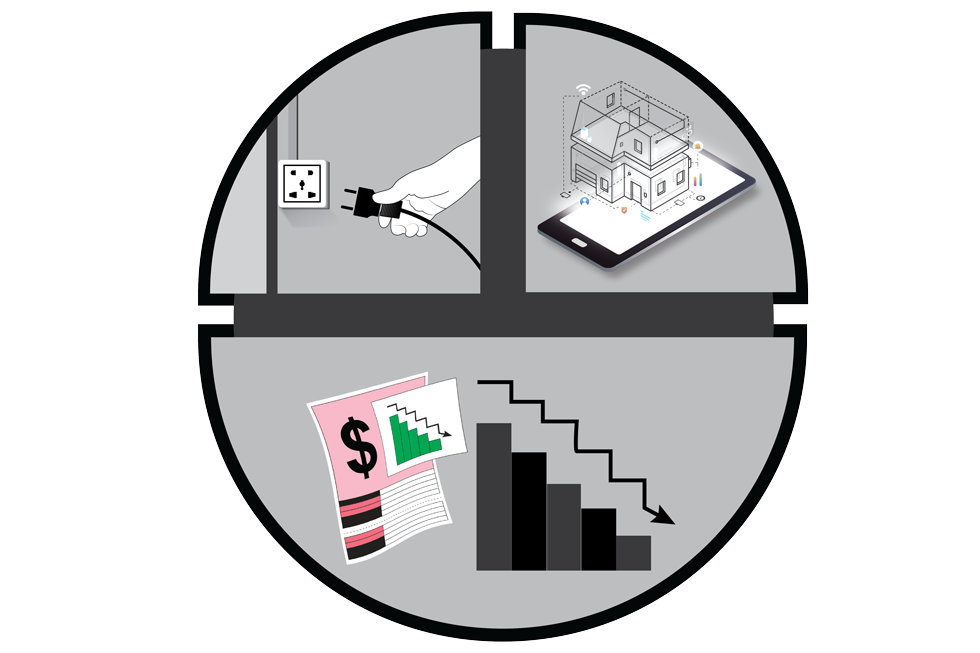
In addition to unplugging devices to avoid “phantom energy drain”, a home automation system can also come in to tackle this as the software integrates your home's smart devices onto a single platform to communicate, monitor and control. As such, through the home automation system, one can exercise greater control over your home’s devices by making them “smarter”. The latest progress in IoT (Internet of Things) technology can also extend to “things” such as “electrical switchboards” for homes and is potentially capable of undoing any appliance’s “Standby” mode and turning devices off completely into full shutdown or into lower states of operation to minimize energy consumption. These options & features can also translate energy efficiency gains into higher monthly savings on your electric bill.
4. REPAIR ANY ELECTRICAL ISSUES IN THE HOME
Air-conditioners, refrigerators & other heavy-duty appliances consume the bulk of your home’s energy. These appliances generate heat which can wear down existing wiring if they are of subpar quality. This can lead to electrical overload which would mean higher electric bills and potential fire hazards. If your home is older than 20 or 30 years, then it would be best to consider electrical rewiring! In order to do this, you will need to take into account the number of appliances you use and the “amperage” required for your home. Depending on the amp rating, an electrician will be able to guide you on whether your home will require 100-amp or 200-amp wiring and the material you should avoid using. Copper is the better alternative compared to aluminium although it is more expensive, it has a significantly reduced risk of overheating and causing an electrical fire. In the long run, saving you money.
Lastly, have you ever felt a slight tingling sensation when using your laptop when it is plugged into your home’s charging socket or any other small electrical appliance? Do your new appliances get damaged quickly? If so, then it is highly likely that your home doesn’t have adequate electrical grounding! If your home lacks electrical grounding, this is both fatal & expensive! To solve this, you can install three-prong outlets for all your major appliances to ensure proper grounding to ensure any excess electricity will not get into the device but into the ground, therefore increasing your device’s overall longevity, reducing electric shock hazards, and lowering your electric costs due to lesser electric loss.
5. INSTALLING DOUBLE-GLAZED WINDOWS & BOOSTING INSULATION
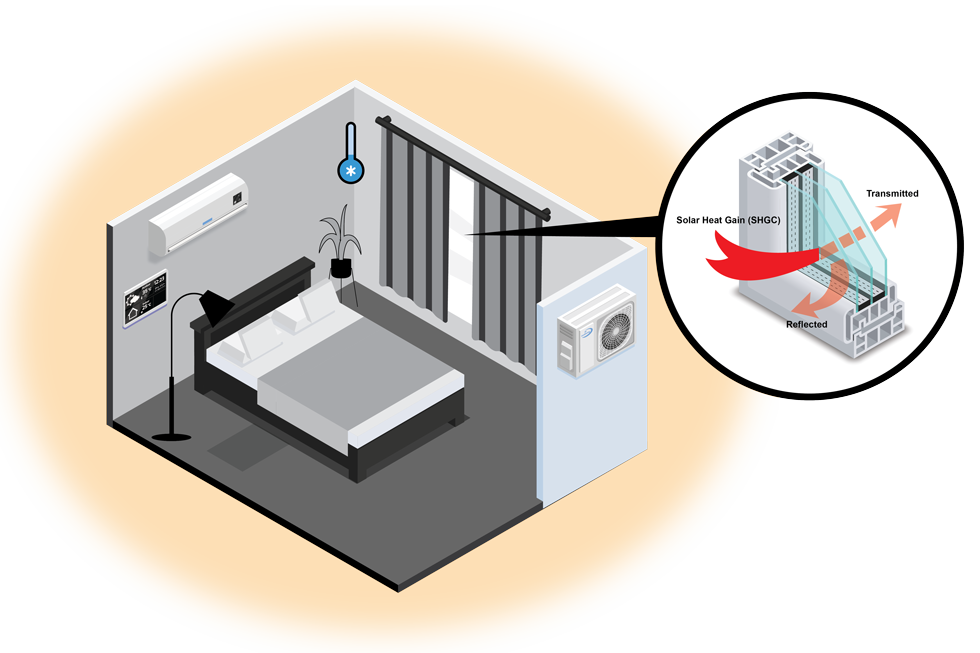
Your home can waste a lot of energy and keep your electric bill high if it isn’t properly insulated. Even if you set your air conditioner or heating system to optimal energy-saving temperatures. This is why good insulation comes into play and can help keep interior temperatures consistent while preventing indoor air from escaping too easily & preventing outdoor air from seeping in. Apart from building materials, you can seal gaps in the window frame better or replace the glass with double-glazed windows.
Double or triple glazed windows offer better insulation efficiency compared to standard single glazed windows which also translate to higher cost-savings on your energy bills. Additionally, they also offer better soundproofing. This can be slightly more expensive compared to sealing your windows, but the one-off costs of upgrading your windows’ glass quality will definitely pay off in the long run in the form of lower electric bills.
The more cost-effective alternative is to check if your current windows are properly sealed or weatherstripped especially during the hotter weather seasons. You can use caulk material to seal any leak you locate and instantly see savings in your monthly bills. The US Department of Energy states that reducing leaks and drafts in the home can save homeowners from 5%- 30% in energy costs per year!
In closing, we hope that you found some of these tips insightful & helpful! Try it out & let us know if you were able to make an impact in reducing your energy costs!
Reach out to us at info@vpstart.com if you’d like to get in touch and if you have any questions!
OTHER News
-
Happy New Year 2026! 31-Dec-2025 |
-
DRCs: Cambodia’s Innovation for the Future of Smart Grid 02-Dec-2025 |
-
VP.Start Completes RPM Grid Upgrade in Four Provinces 27-Nov-2025 |
-
Sharing the SIMA Journey in Berlin 24-Nov-2025 |
-
VP.Start: Bringing Global Connectivity to the Future 24-Nov-2025 |
-
The Power of Connectivity: VP.Start’s Global Mission 22-Nov-2025 |
-
Cambodian Innovation for Global Sustainability 19-Nov-2025 |
-
What can school give you? 19-Nov-2025 |
-
What can't school give you? 19-Nov-2025 |
-
VP.Start is a company of Cambodian Innovation 19-Nov-2025 |
-
Strengthening Collaboration Through Communication 18-Nov-2025 |
-
Transforming the Future Through Collaboration 18-Nov-2025 |
-
Cambodian Innovation for Global Sustainability 15-Nov-2025 |
-
Building Trust Through Every Connection 15-Nov-2025 |
-
DRC-001: Empowering the Future of Grid Modernization 15-Nov-2025 |
-
VP.Start: Where Technology Never Stops Evolving 08-Nov-2025 |
-
What is your SIMA Journey? 08-Nov-2025 |
-
What will VP. Start's BOX become in the near future? 08-Nov-2025 |
-
What Future do you want to create? Why? 08-Nov-2025 |
-
What is the Power of Innovation? 08-Nov-2025 |
-
Stay Curious. Stay Playful. Stay Innovative 05-Nov-2025 |
-
Empowering Growth Through Innovation 30-Oct-2025 |
-
We Speak Innovation to Inspire Change 22-Oct-2025 |
-
Enhancing Current Balancing Efficiency with the LMS 22-Oct-2025 |
-
Stop Selling. Start Listening 11-Oct-2025 |
-
Which do you want to become? 10-Oct-2025 |
-
I Saw the Future, and I Have Hope 10-Oct-2025 |
-
How to Become an Innovator 10-Oct-2025 |
-
The Power of Innovation Through Technology 10-Oct-2025 |
-
Why do we need the DRC? 09-Oct-2025 |
-
Data Beyond Technology: The Evolution of Intelligence 09-Oct-2025 |
-
Together Toward an Intelligent and Sustainable Future 04-Oct-2025 |
-
Small Country, Big Innovations 01-Oct-2025 |
-
Revolutionizing Energy Distribution with RPM Grid-AP 20-Sep-2025 |
-
Innovation Belongs to Everyone 17-Sep-2025 |
-
RPM Grid-AP Training for VP.Start Staff 13-Sep-2025 |
-
VP.Start: Driving Innovation for a Sustainable Future 10-Sep-2025 |
-
VP.Start: Innovation That Drives Global Impact 10-Sep-2025 |
-
What Makes the RPM Grid-AP Stand Out? 08-Sep-2025 |
-
What Is the Role of the RPM Grid-AP? 08-Sep-2025 |
-
RPM Grid-AP A Revolutionary Smart Grid Management System 06-Sep-2025 |
-
The Evolution of DRC: From Birth to Breakthrough 03-Sep-2025 |
-
RPM Grid-AP 29-Aug-2025 |
-
DRC-003: A Missing Link for the Smarter Grid 29-Aug-2025 |
-
A Revolutionary Solution for the Grid Transformation 27-Aug-2025 |
-
A Consumer-First Philosophy at VP.Start 27-Aug-2025 |
-
Issues, Solutions, Impacts: The Power of EcoGrid 27-Aug-2025 |
-
Commissioning RPM Grid-AP for EDC 27-Aug-2025 |
-
Innovation! 21-Aug-2025 |
-
What Makes DRC-003 a Powerful Tool in Energy Management? 21-Aug-2025 |
-
How Does DRC 003 Respond to Powerline Faults? 21-Aug-2025 |
-
DRC-003 A Watchful Guardian for Auto Recloser 21-Aug-2025 |
-
How Does DRC-003 Reduce Operational Costs? 19-Aug-2025 |
-
The Uniqueness of DRS 14-Aug-2025 |
-
Why Do Utilities Need to Use DRS? 14-Aug-2025 |
-
What Will the DRC- 012G Become in the Future? 12-Aug-2025 |
-
DRC-012G A Game-Changer for Energy Meter Management 10-Aug-2025 |
-
Why Did VP.Start Develop the DRC-012G? 06-Aug-2025 |
-
What Makes the DRC-012G Outstanding? 06-Aug-2025 |
-
What Challenges Can the DRC-012G Tackle? 06-Aug-2025 |
-
The Roles of the DRC-012G in Energy Meter Management 06-Aug-2025 |
-
How Can the DRC-012G Enhance Energy Efficiency? 06-Aug-2025 |
-
DRS Reduces Energy Losses 03-Aug-2025 |
-
How Does DRS Revolutionize Meter Management? 03-Aug-2025 |
-
Why Did VP.Start Create DRS? 03-Aug-2025 |
-
Why does VP.Start need to go international? 31-Jul-2025 |
-
What Is the Green Innovation of VP.Start? 30-Jul-2025 |
-
How Does DRC-004G Contribute to Combating Climate Change 30-Jul-2025 |
-
Key Roles of the DRC-004G in Metering Management 26-Jul-2025 |
-
How Does DRC-004G Optimize Energy Efficiency? 23-Jul-2025 |
-
What Challenges Can the DRC-004G Address? 23-Jul-2025 |
-
How do we create a high-quality solution at VP.Start? 20-Jul-2025 |
-
What Are The Key Features Of The DRC-018? 20-Jul-2025 |
-
What Is DRC-018? 18-Jul-2025 |
-
How Can DRC-018 Streamline Operations? 18-Jul-2025 |
-
DRC (Distribution Remote Control) 14-Jul-2025 |
-
What builds our momentum and moves us forward? 14-Jul-2025 |
-
What makes our journey work? 14-Jul-2025 |
-
How Can We Reach Our Goal If We DON'T START NOW? 14-Jul-2025 |
-
VP.Start Expert Engineer Presents LMS at EDC Takeo 10-Jul-2025 |
-
VP.Start Expert Engineer Presents LMS to EDC Kampot 10-Jul-2025 |
-
VP.Start’s Eco-sustainable System for the Future 08-Jul-2025 |
-
DRC-006 Is an Eco-solution for Grid Modernization 08-Jul-2025 |
-
DRC-006 Optimizes Efficiency and Reduces Losses 08-Jul-2025 |
-
How Does the DRC-006 Make Benefits for Utilities 08-Jul-2025 |
-
What Can Utilities Do with DRC-006? 05-Jul-2025 |
-
DRC-006 ls Designed to Streamline RTUs Operations 05-Jul-2025 |
-
DRC-009 An Eco-Solution Designed for Ring Main Units 03-Jul-2025 |
-
DRC-009 Streamlining Operations 03-Jul-2025 |
-
How is DRC-009 Operated? 03-Jul-2025 |
-
RPM Grid-AP One Platform to a Nationwide Control System 03-Jul-2025 |
-
How Does DRC-009 Make Benefits for Utilities? 29-Jun-2025 |
-
The Power of the Circle 28-Jun-2025 |
-
What Challenges Can DRC-015 Address? 19-Jun-2025 |
-
How Can the DRC-015 Make Benefits for Utilities? 19-Jun-2025 |
-
How Can the DRC-002 Streamline Grid Operations? 14-Jun-2025 |
-
What Are the Powerful Features of DRC-002? 14-Jun-2025 |
-
What Is the Next Version of the DRC-002? 14-Jun-2025 |
-
A Vigilant Reporter Transmitting Data to LMS 14-Jun-2025 |
-
What Dose It Really Mean to be Data-diven? 12-Jun-2025 |
-
What Are the Roles of DRC-002 in Modern Grid Management? 12-Jun-2025 |
-
What is your Endless Journey? 09-Jun-2025 |
-
What Makes You Different? 09-Jun-2025 |
-
What Moves You Forward? 06-Jun-2025 |
-
What Drives You a Story? 05-Jun-2025 |
-
VP.Start in the Sustainable Smart City Workshop 04-Jun-2025 |
-
What Makes NiteLite System Standout? 01-Jun-2025 |
-
NiteLite Enhances EnergyEfficiency 01-Jun-2025 |
-
NiteLite Increases Cost Efficiency 01-Jun-2025 |
-
What Will DRC-001 Look Like in the Future? 31-May-2025 |
-
How Can the DRC-001 Make Return on Investment? 29-May-2025 |
-
The Spirit of Relentless Growth 29-May-2025 |
-
The 3 Outstanding Features Of AlienCheck 28-May-2025 |
-
DRS Enhances Power Quality 28-May-2025 |
-
What Is the Next Version of LMS? 28-May-2025 |
-
The Innovation Behind the DRC-015 in Modern Grid Systems 28-May-2025 |
-
AlienCheck: Universal Connectivity Network (UCN) 28-May-2025 |
-
Instant Alarm for Anomalies on the Powerlines 22-May-2025 |
-
Seamless Remote Control Capability 17-May-2025 |
-
Streamline Electrical Grid Management 17-May-2025 |
-
Reduce Operational Costs and Improve Energy Efficiency 16-May-2025 |
-
RPM Grid-AP 10-May-2025 |
-
PLUM App (Power Line Utility Management) 10-May-2025 |
-
VP.Start Presentation on DRS for EDC Mondulkiri 08-May-2025 |
-
VP.Start Presentation on DRS for EDC Ratanakiri 07-May-2025 |
-
VP.Start Presentation On DRS to EDC Kratie 06-May-2025 |
-
The SIMA Journey – our ideology 02-May-2025 |
-
What does VP.Start believe? 02-May-2025 |
-
DRS (Advanced Metering management System) 02-May-2025 |
-
RPM Grid System (Remote Power Medium Voltage Grid) 02-May-2025 |
-
How Can We Harness Data for a Sustainable Future? 23-Apr-2025 |
-
The Smart City Presentation to Takeo Provincial Governor 08-Apr-2025 |
-
VP.Start’s CEO Visited EDC Kampong Cham 12-Mar-2025 |
-
VP.Start’s CEO Visited EDC Tboung Khmum 12-Mar-2025 |
-
VP.Start’s CEO Visited Electric Licensees 20-Feb-2025 |
-
VP.Start’s CEO Visited EDC Siem Reap 19-Feb-2025 |
-
VP.Start’s CEO Visited EDC Sihanoukville 18-Feb-2025 |
-
VP.Start’s CEO visited ELECTRICITE DE BATTAMBANG 12-Feb-2025 |
-
VP.Start Visited Electricity of Bateay Meanchey 12-Feb-2025 |
-
DRS Presentation for EDC Takeo 07-Feb-2025 |
-
VP.Start's BOX Engineering Day 2024 at RUPP 26-Oct-2024 |
-
MISTI Visits VP.Start Campus to Explore New Technologies 10-Sep-2024 |
-
VP.Start Visits North Star Group in Hanoi, Vietnam 06-Sep-2024 |
-
Sustainability Recognition Award 31-Aug-2024 |
-
Proudly Cambodia, Boldly International 06-Aug-2024 |
-
Why VH-012-1C is the Best Choice for a Smart Home? 22-Jul-2024 |
-
The Presentation of DRC Solutions to EDC Takeo 26-Jun-2024 |
-
Presentation at Borey Peng Huoth Boeung Snor Community 11-Jun-2024 |
-
GRID CALCULATION, License Men Khunthea 11-Jun-2024 |
-
The 9th GEE Family Reunion at ITC 08-Jun-2024 |
-
Presentation at CHIP MONG 271 04-Jun-2024 |
-
The Objective for Enhancing Pedagogy (OEP) 30-May-2024 |
-
The Visit and Presentation to EDC Takeo 28-May-2024 |
-
The Visit to the Huawei Technology (Cambodia) office 21-May-2024 |
-
Baksey Media (Technology Cambodia) 26-Apr-2024 |
-
Visit by the World Bank Group 03-Apr-2024 |
-
Visited to ENTEC foreclosure 16-Mar-2024 |
-
Visited LS Electric and PECC2 14-Mar-2024 |
-
Why Needs to Update the Conventional Grid to Smart Grid? 09-Jan-2024 |
-
GRID CALCULATION, License Vorn Virak Services 21-Dec-2023 |
-
Bro Tip Project for "Ministry of Mines and Energy" 25-Nov-2023 |
-
Balancing the Grid 22-Nov-2023 |
-
What Is RPM Grid? 24-Oct-2023 |
-
Getting to Know the Electrical Grid 07-Sep-2023 |
-
Industry 4.0 in Cambodia at the ASEAN Factori 4.0 25-Aug-2023 |
-
Presentation to EDC Banteay Meanchey 15-Mar-2023 |
-
Presentation to EDC Siem Reap 14-Mar-2023 |
-
Presentation to EDC Stung Treng 28-Feb-2023 |
-
Presentation to EDC Kampong Cham 23-Feb-2023 |
-
Presentation to EDC Svay Rieng 21-Feb-2023 |
-
Business Presentation to EDC Kampot 07-Feb-2023 |
-
Business Presentation to EDC Mondul Kiri 25-Jan-2023 |
-
Business Presentation to EDC Kratie 24-Jan-2023 |
-
Presentation EDC Tboung Khmum 23-Jan-2023 |
-
Presentation DRC-006 to DCC of EDC Phnom Penh 01-Nov-2022 |
-
Basics of Distribution Grids & Managing Grid Stability 12-Oct-2022 |
-
Street Light Presentation at Kandal Province Hall 26-Aug-2022 |
-
Business Presentation and Visit in Malaysia 13-Aug-2022 |
-
Presentation Street Light at Kandal Province 28-Jun-2022 |
-
Business Presentation to EDC Phnom Penh, DCC 30-Mar-2022 |
-
Presentation DRC-009 to DCC of EDC Phnom Penh 05-Jan-2021 |
-
Celebrating 6 Years of Achievements & The New Year 2021 30-Dec-2020 |
-
Presentation to Rural Electrification Fund 09-Dec-2020 |
-
Presentation to EDC Bunteay Mean Chey 03-Dec-2020 |
-
Presentation to Business and Distribution Department 29-Sep-2020 |
-
Department of Rural Electrification Fund 09-Sep-2020 |
-
Presentation to EDC Ratanakiri 21-Jun-2020 |
-
Presentation to EDC Tbong Khmom 04-Jun-2020 |
-
Presentation to EDC Kampot 07-May-2020 |
-
Presentation to EDC in Phnom Penh City 23-Jul-2019 |
-
Sales Team Presents To The EDC at Svay Rieng 20-Dec-2018 |
-
Presentation to EDC Kratie 20-Jun-2018 |
-
EDC Tbong Khmum Presentation 03-May-2018 |
-
Siemens Team Visit at VP.Start 02-Feb-2018 |
-
Presentation to BVC Power 01-Jan-2018 |
-
EDC Kampot Presentation 19-Jul-2017 |
-
Business Presentation to EDC Kampong Speu 17-Jul-2017 |
-
Presentation to EDC Battambang 23-Nov-2016 |
-
Presentation to EDC Kampong Cham 04-Nov-2016 |
-
Presentation to Electricity of Sihanouk Province 26-Oct-2016 |
-
Business Presentation to EDC Siem Reap 18-Oct-2016 |
